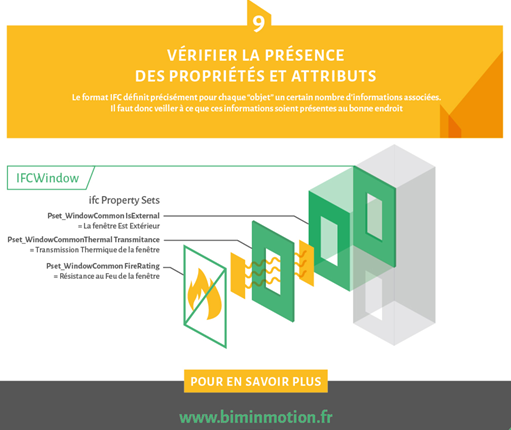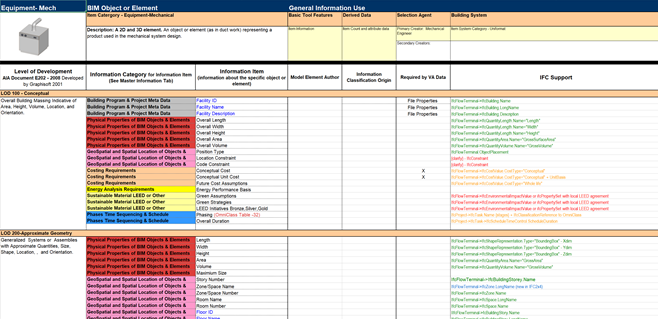How can the BIM Execution Plan be easily applied to objects in a digital model?
What is the BIM Execution Plan?
In a BIM project, the project owner (client) is principally responsible for defining the BIM objectives of the project. What is expected from the data collected for the construction phase? Does the client want a digital ABD, As-built documentation? Does the BIM model have to be used for the building’s operation?
The client then specifies these objectives and shares them with its partners. These include translating these objectives into processes, into tools: this is called the BIM Execution Plan. It defines communication standards, exchange formats, model delivery standards, naming conventions, levels of detail (LOD, LOI)…
The client ties in all the actors of a construction project around the BIM Execution Plan. It is the client’s responsibility to ensure that the teams respect this execution plan and that the model complies with it. The client’s BIM representative, who supports the client’s representative, is specifically assigned to this control task.

Figure 1 – The quality control steps of a BIM model
The client’s BIM representative is in charge of a number of controls, including control of the classifications and parameters of each of the model’s object categories. Controlling the properties and values of each object in the model is a veritable puzzle and becomes very time consuming. The extraction of data from the model is complicated and often incomplete due to the lack of structure of the information.
Application of the BEP represents a major challenge for the client’s representative. The consequences for the quality of the deliverables can be particularly significant: if the information that is supposed to be present in the model, and more specifically in the objects, is not available, it prevents the project manager from being able to move to the control stages, to make technical choices and to perform calculations. This has consequences on the quality of the building to be constructed or on the time spent to set up the maintenance management tool. We will see below how to avoid these negative impacts.
Defining the project management repository
The first fundamental step is to define the technical reference of the objects: foundations, stairs, air-conditioning equipment… This can translate into an Excel document that will initially define all the categories of objects that will be used in the project. These categories define a classification, which may be an existing international classification such as UNIFORMAT II or an adaptation of this classification if the client’s representative requires it. For each of these categories it is necessary to define: the level of geometric detail (LOD), the expected parameters (LOI), but also the associated documents that may be required (installation instructions, maintenance guide…).

Figure 2 – Technical reference example
To define the properties or parameters expected for each device, the client’s representative will start from the BIM objectives that it has set. Take the example of a client who wants to use BIM in the operating phase. If the client is a building operator or already has a partner, it can specify the data needed for the CMMS tool directly. If the client is not a direct operator, it will be able to rely on market standards or de facto standards such as COBie or the BIM Exploitation Kit.
This preliminary step therefore makes it possible to gather the data required and to structure it around a classification.
The properties of each category must then be integrated into the model’s objects.
How can application of the BIM Execution Plan be simplified for the model’s objects?
Ideally, the client enters into a contractual BEP, which results in the delivery of the model conforming to its requirements, particularly in terms of data. In reality, this is a difficult point to enforce. It is however possible to offer companies tailored processes and tools for application of the repository. This provides project partners with simple tools so that architects, design offices, construction companies and installers can easily apply the repositories required by the client.
BIM&CO is dedicated to providing tools to client representatives and client BIM representatives so that companies can easily apply classifications and enter the expected properties. A tool such as Onfly allows you to set a custom classification and then define the properties required for each component category. Any new object created or attached to this category inherits the parameters and is therefore automatically compatible with the requirements of the BEP. The objects are then added to the client representative’s library. If the parameters are not specified, the objects are not entered into the library.

To gain support of the partners, it is also a question of adapting to the existing working methods of the companies. This repository can either be attached to an existing object library provided by the client, or used directly with the private libraries of the companies. This allows companies to be free to use their families and thus not disrupt their modelling methods, while facilitating integration of the BEP properties. To achieve this, the client representative’s repository and the corporate repository must be able to communicate. BIM&CO has developed a technology to harmonise the repositories to ensure that everyone can use their own terminology.
For example, an installer may work using its own shared settings and with its own family library to which it can easily apply the client representative’s repository. It will then add its items to the client representative’s library. This allows it to benefit from productivity tools such as updating the expected property values online, without having to go through Revit, while also saving time in the control steps. In effect, the client’s BIM representative can make a quick check on the device and to verify that both the data and the documents (technical sheet…) have been provided.
It really is possible for a client and its team to systematically apply the BEP. To achieve this, it is a question of establishing its technical reference once only for everyone, then to choose a controlling tool to provide it to the companies. Finally the only thing left is to train companies in the new processes.
Questions? Send us an email!
